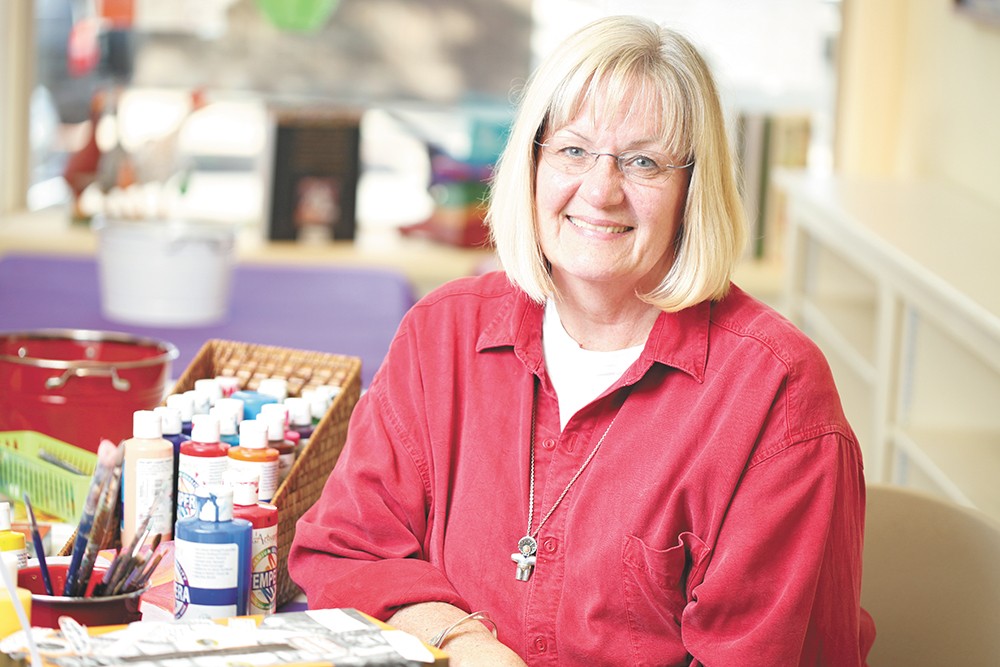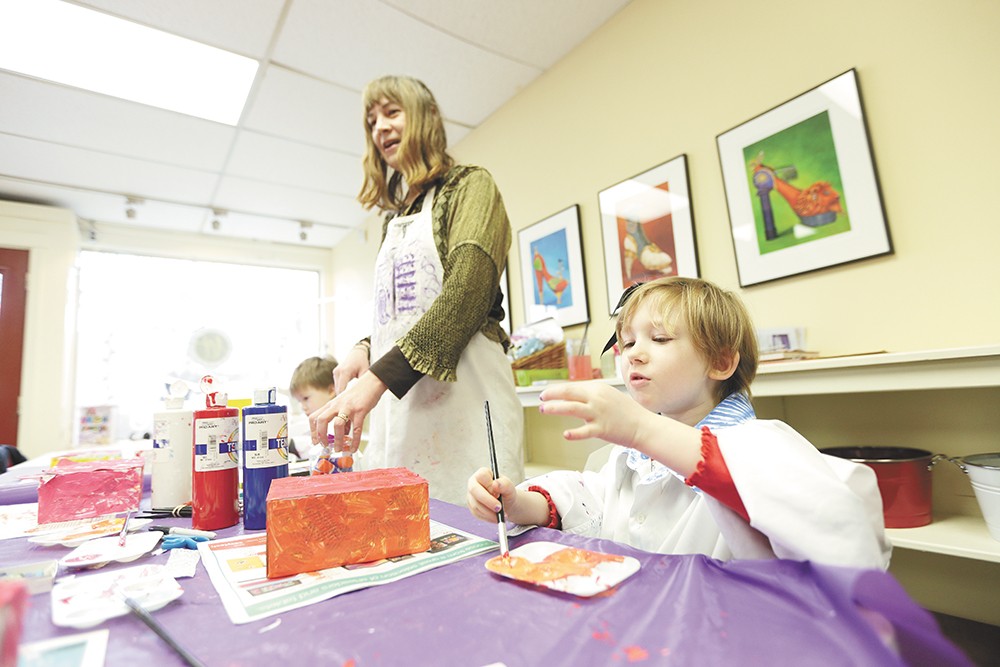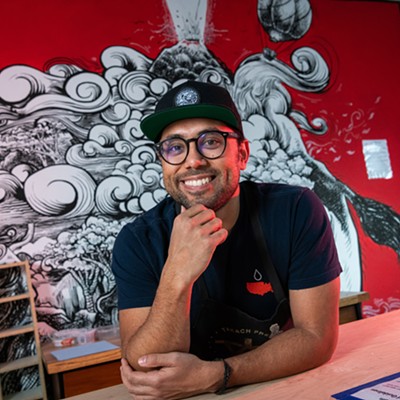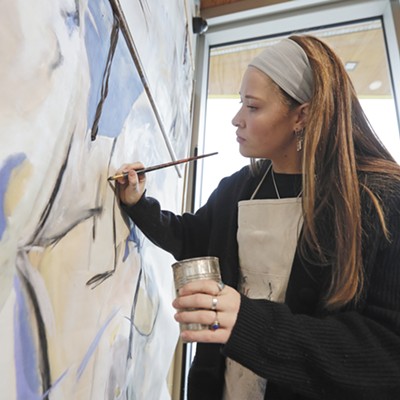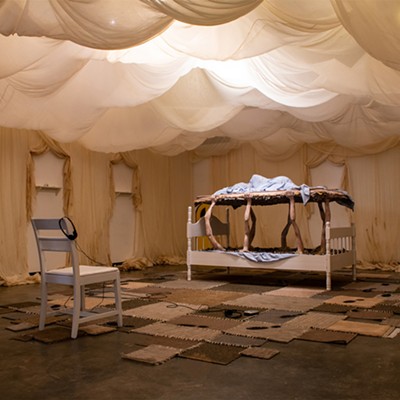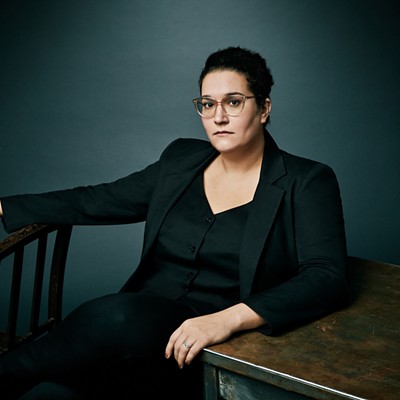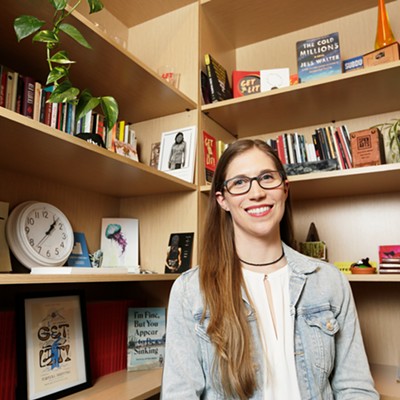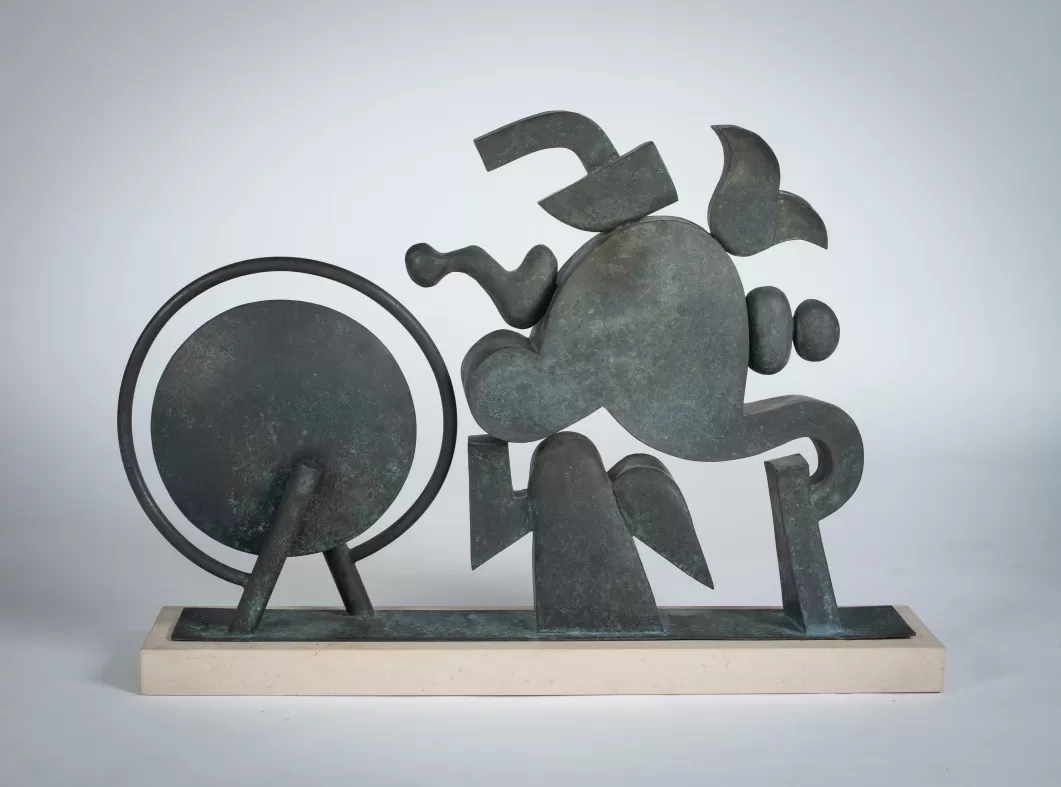Standing atop of the small flight of steps at the rear of the Tinman Gallery, Sue Bradley surveys what she's calling "The Greatest Hits," an exhibition and discounted sale of work by some of the most prominent names her gallery has featured since opening in early 2003. On a wall to her left hangs a line of vibrant paintings by Ric Gendron. She singles out a psychedelic freeze-frame of Jimi Hendrix in concert as one she's especially reluctant to part with.
Above a row of nearby bookshelves are a half-dozen portraits by Mel McCuddin, unsettling character studies that recall the work of Francis Bacon, but favor a comic sense of disproportionality to his visceral torment. In the bright lower level, works by Harold Balazs, perhaps the most famous artist to have been associated with Tinman, are in full view through the building's large front windows.
Bradley's upcoming retirement — and with it, the closing of Tinman, one of the feathers in the historic Garland business district's cap — is the reason for this nearly monthlong retrospective. As a result, she says there's a "bittersweet" quality to this final showcase, which runs until Tinman officially shuts its doors at the end of this month.
"It's just sort of been a process," says the 66-year-old Michigan native and mother of three, who moved to Spokane in 1979. "My husband retired last fall, and I've also been involved in working on establishing the Art School since they sold their building almost 10 years ago."
The recession of 2008 hastened what might otherwise have happened gradually. Bradley estimates that sales started to drop roughly four years ago as disposable income shrank among collectors both casual and dedicated.
Other forces have been chipping away at the foundation of the 20th-century gallery model on which Tinman rests — a model that helped launch the careers of Andy Warhol, Jackson Pollock and Mark Rothko. As with music, TV and journalism, the rise of social media and digital distribution, coupled with consumer society's insatiable hunger for the next fad, has put the status quo in constant flux. Notions like exclusive contracts between artists and curators or discrete exhibition spaces have been subverted by online marketplaces and a DIY approach to collecting that has transferred influence to different tastemakers.
"There's a lot of talk about self-curating, and Etsy has has become for art what self-publishing is for the book world. And so people's perceived need for a gallery owner to be in the middle of that to help them make their decisions has gone down," says Bradley.
"What's being lost ... is that there are missed opportunities for the community in Spokane to encounter some really wonderful artistic creations. And it's too late," says Bradley, often because the established artists are passing on before they are recognized beyond a circle of aficionados.
"But what's being gained is that the field is getting broader," she says. "Media are changing. People are working less in traditional fine-arts-type, media-like painting. They're doing mixed media or collages or installations or think pieces."
There is, however, an element of continuity in all this change. Through her involvement with the Spokane Art School, Bradley already has been helping to cultivate the next generation of regional artists. The nearly 50-year-old institution began holding classes in the adjacent building when Tinman Too, a children's bookstore, closed two years ago. The current gallery space will transfer to the school; an invitational exhibition titled "On the Road" will open the day after Tinman closes.
"I'm sorry to see it go, because what I love about the gallery is the excitement that comes when you match somebody up with a piece of art and they take it home. That's just a real rush. I used to be a trial lawyer, and it's the same thing when you win a trial. I'll miss that," she says.
"We accomplished a lot in the years that we were open, but we're poised to do some really good things with the Art School," Bradley says. "My board is really excited about the next step." ♦
"The Greatest Hits" at the Tinman Gallery • 811 W. Garland • Mon-Sat, 10 am-6 pm • 325-1500 • tinmanartworks.com

